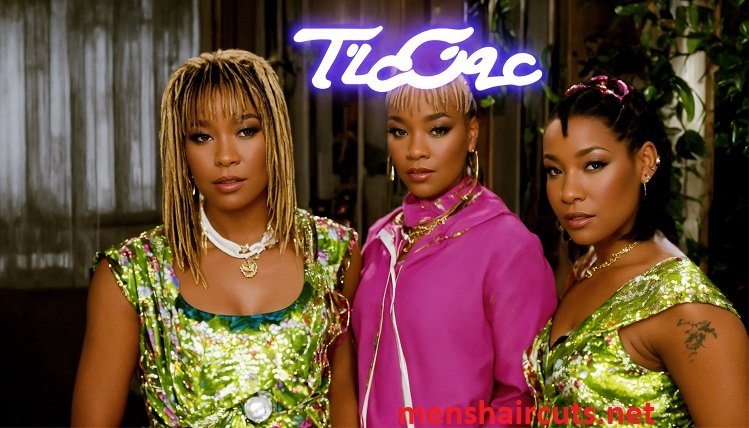Introduction
Dreadlocks, or “dreads,” are another name for lock hair styles, which have a long cultural heritage and are praised for their distinct beauty and adaptability. This thorough guide will lead you through all you need to know about lock hairstyles, regardless of whether you’re just getting started with locks or looking to try out different looks. We have everything you need, from unique styling ideas to upkeep advice.
What are Lock Hairstyles?
Hair is mated or braided into ropes or strands to create lock hairstyles, commonly referred to as dreadlocks or dreads. They can be purposefully made by techniques like twisting, backcombing, or braiding, or they might develop organically from neglect. Locks are a versatile option for people looking for a unique and low-maintenance hairstyle because they come in a variety of sizes, shapes, and textures.
History and Cultural Significance
There is a millennium-old cultural legacy to lock hairstyles. People with locked hair have been portrayed in literature and art by ancient civilizations like Egypt and India; these people are frequently seen as symbols of identity, strength, and spirituality. Lock hairstyles became popular in more recent times because of Rastafarianism, where they stand for a dedication to natural life and spiritual development. Lock hairstyles are still popular now because of its uniqueness and constant evolution due to different cultural tendencies.
Types of Locks
There are many different types of locks, and each has special qualities and upkeep needs of its own. Conventional locks develop organically with little assistance over time, whereas sisterlocks are painstakingly made with a precise parting method that produces smaller, more consistent locks. Whereas interlocked locks are kept structured by using a tool to bind the hair strands together, freeform locks are left to mat and shape naturally without much treatment.
Starting Your Lock Journey
Selecting the lock method that best fits your hair type and lifestyle is the first step in beginning your lock journey. It is important to prepare your hair for locking, whether you choose to lock it naturally or with assistance using techniques like braiding or twisting. Making sure your hair is clean, well-hydrated, and prepared for locking is part of this.
Maintaining Your Locks
Regular hair washing with appropriate solutions that cleanse without building up or unraveling is necessary to keep hair healthy. To keep your locks looking nice and tidy, you might need to retwist or manage them on a regular basis, depending on the texture and speed at which your hair locks. Proper product selection, including specialty oils and shampoos, contributes to the longevity and quality of hair.
Styling Your Locks
Numerous styling options are available for locks to fit any mood or occasion. There are numerous ways to showcase your individuality through your hair, ranging from sophisticated buns and updos for formal occasions to carefree half-up looks for daily wear. Scarves, wraps, and beads are great ways to add flair and uniqueness to your outfit while highlighting your hair’s inherent beauty.
Coloring and Decorating Your Locks
You can add even more individuality to your hairdo by coloring and decorating your hair. There are several ways to get the desired effect, whether you choose to use bold colors or natural dyes like henna. Incorporating ornamental components like beads, shells, or yarn wraps not only makes your locks more visually appealing, but it also showcases your individuality and originality.
Common Myths About Lock Hairstyles
It’s crucial to dispel rumors about lock hairstyles in order to comprehend their actual characteristics and cultural importance. Myths over hygiene, expertise, and cultural appropriation frequently cast a shadow over the elegance and variety of lock hairstyles. Learning the truth behind wearing locks and sharing it with others helps people respect and value this age-old and significant hairdo.
Cultural Appropriation vs. Appreciation
It is necessary to comprehend the cultural background and meaning of lock hairstyles in order to negotiate the complications of cultural appropriation vs respect. Although anyone can wear locks, it’s important to embrace them with consideration and an understanding of their cultural heritage. People can take pleasure in wearing locks as a celebration of diversity and individual expression by respecting their history and value.
Maintaining Healthy Locks lock hair styles
It’s important to pay attention to diet, hydration, and appropriate care techniques in order to maintain healthy locks. Maintaining hydration in your hair avoids dryness and breakage, and a well-balanced diet high in vitamins and minerals encourages hair health and growth. Maintaining strong, healthy locks that feel and look amazing is made easier by avoiding overly manipulating hair and by utilizing mild products designed specifically for locked hair.
Conclusion
In summary, lock hairstyles are a symbol of cultural history and individual expression rather than merely a fashion statement. Locks provide an interesting and adaptable option, whether you’re drawn to their distinct beauty, motivated by their history, or just want a low-maintenance hairstyle. You may appreciate and accept your natural hair with confidence if you know what kinds, how to take care of them, and what styling options are available.
FAQ
Can anyone get lock hairstyles?
Yes, lock hairstyles can be worn by people of various hair types and textures. However, the methods and maintenance routines may vary.
How long does it take to form locks?
The hair texture, care regimen, and technique selected all affect how long it takes for locks to form. It may last anywhere from a few months to more than a year.

